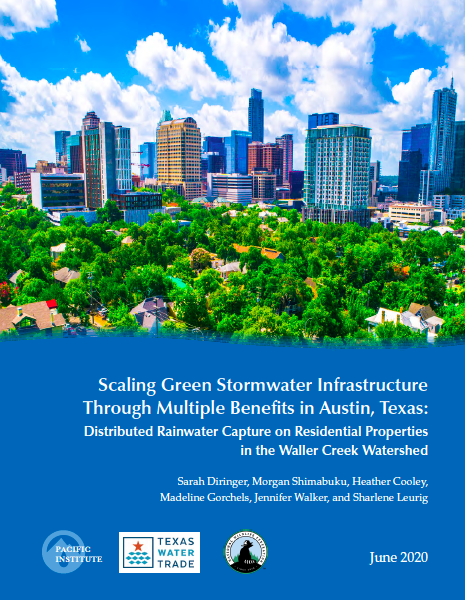Scaling Green Stormwater Infrastructure Through Multiple Benefits in Austin, Texas: Distributed Rainwater Capture on Residential Properties in the Waller Creek Watershed

Scaling Green Stormwater Infrastructure Through Multiple Benefits in Austin, Texas: Distributed Rainwater Capture on Residential Properties in the Waller Creek Watershed
Overview
The City of Austin, Texas is facing an increasingly uncertain water future, from decreasing water supplies and more intense droughts to periodic flooding and water quality impairments. Austin is addressing these challenges head on, from investments in water efficiency and water reuse to rainwater harvesting and stormwater management. These investments present a significant opportunity to support not only water, but to provide economic, social, and environmental benefits. By considering these co-benefits, water managers can increase funding through collaborative partnerships and co-funding opportunities, build partnerships, and garner public support.
For this case study, the Pacific Institute collaborated with the City of Austin, Texas, National Wildlife Federation, and Texas Water Trade to scale green stormwater infrastructure on residential properties in Austin. Using the Pacific Institute’s “multi-benefit framework,” the authors evaluated the multiple benefits and beneficiaries of these projects and opportunities to co-fund these investments. The framework outlines a process for engaging with stakeholders to systematically evaluate and incorporate the broad benefits and trade-offs of water management options into decision-making.
The experience of Austin can be used by other cities around the United States as they incorporate their own co-benefits into their water management projects.
In this Series
Resources
Resource Library: Multi-Benefit Resource Library

